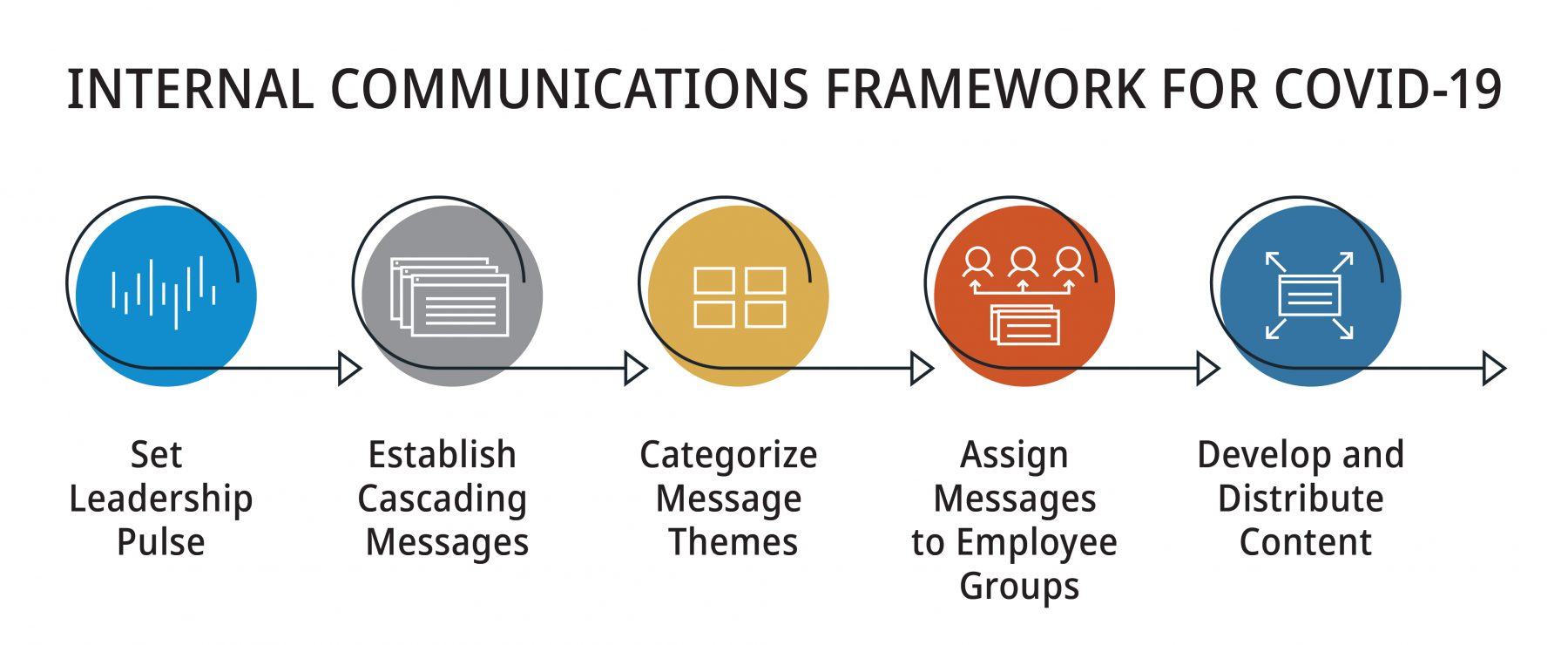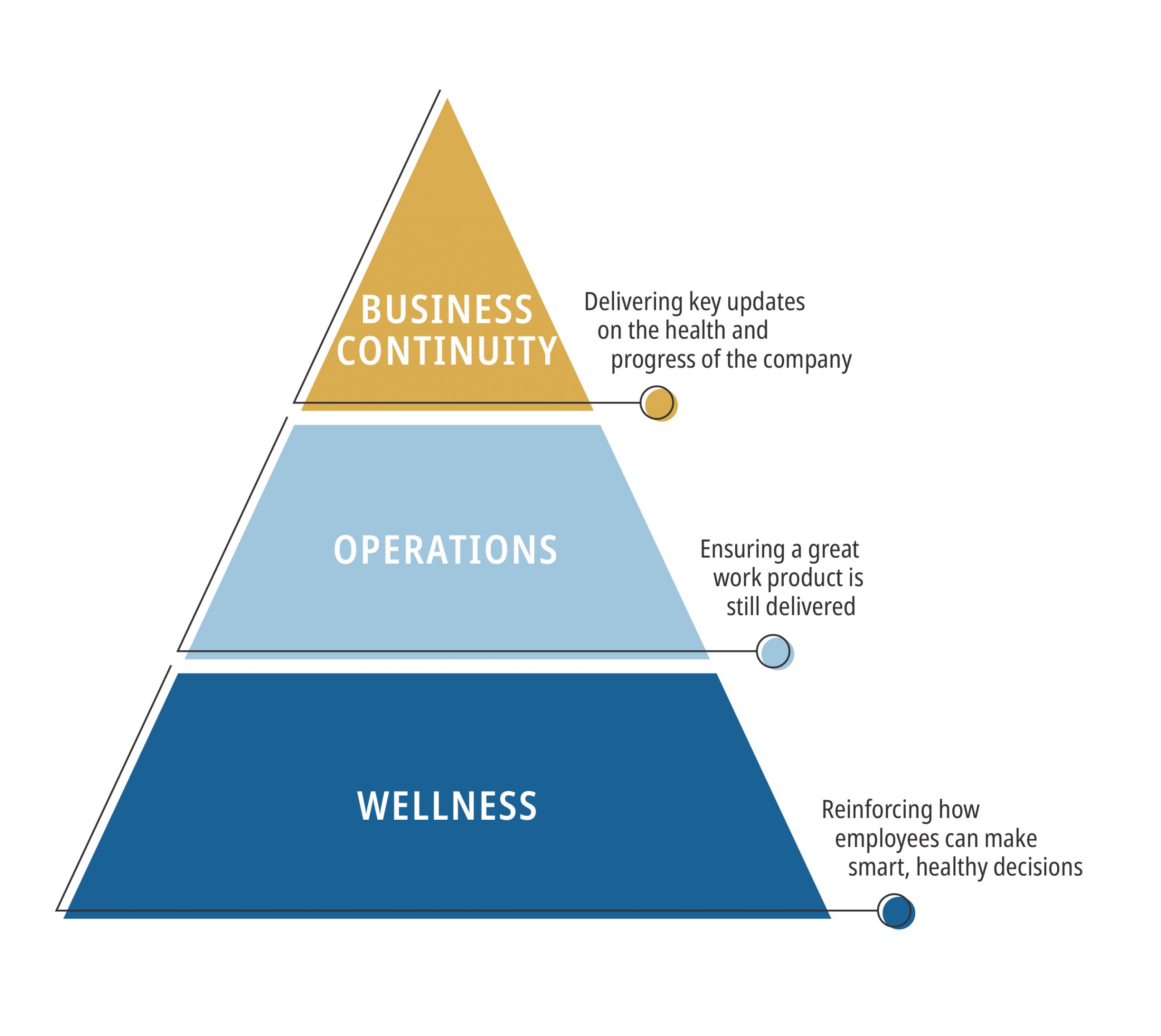
Internal Communications and COVID-19
By: Andrea Trapani
In a recent Institute for Public Relations survey, 83% of business leaders and communicators reported being “moderately” or “extremely” concerned about the potential impact of COVID-19 on their companies, suggesting the virus and its effects are not going away anytime soon.
As the COVID-19 coronavirus crisis continues to disrupt business operations and force companies to make real-time operational decisions, it’s vital that organizations establish and manage clear lines of communications with their employees.
While many standard practices for internal communications still hold true when navigating these sensitive discussions, the pandemic is repeatedly rewriting the rules each day as updates and news emerge from government and health officials.
At Identity, we’ve held several highly attended live webinars about communications strategies as we navigate COVID-19, including one session specific to internal communications.
In this webinar, we discussed why it’s important to build an operational framework for internal communications, establish key communications themes for outreach and have a strategy in place that is aligned with brand values and company DNA.
COVID-19 Internal Communications Framework
Building a solid internal communications framework is key to sustaining productivity under a globally impacted remote work situation. With employees driving discussions about COVID-19 even within internal channels, transparently addressing the steps your company is taking does a great deal in helping to ease their absolutely valid fears.
For Identity, our recommended internal communications framework for COVID-19 looks like this:
- Set Leadership Pulse
- Establish Cascading Messages
- Categorize Message Themes
- Assign Messages to Employee Groups
- Develop and Distribute Content

Leadership Pulse
Your organization’s leadership team needs to institute a regular pulse for meetings dedicated solely to the impact of the COVID-19 pandemic. This discussion is of high-priority importance to your staff and operations and cannot be done as an “agenda item” for a standing meeting. The people in this meeting are now part of a task force focused on sharing information and developing real-time next steps to align with the speed of communication and information flow.
Establish Cascading Messages
For hyper-connected companies, the move to remote work feels different. To allay concerns, it’s important to set a regular interval for internal communications across all staff. For larger updates, set a regular date and time during which to distribute information. Real-time updates should be shared through instant chat tools like Slack or Teams.
Categorize Message Themes, Assign Messages to Employee Groups
When developing themes for your COVID-19 internal messages, we recommend organizations categorize them in the following way:
- Wellness. The most frequent messages should reinforce how employees can make smart, healthy decisions during the crisis—including health and wellness support, cleaning updates and employee FAQs. These should be captained by the HR department.
- Operations. Senior leadership, management and C-level executives should take the lead in developing, inspiring and motivating content centered on ensuring a great work product is still delivered by employees while operations are shifted and/or disrupted. This can include best practices for working remotely, technology guides and client FAQs.
- Business Continuity. Important information deserves its own moment from the C-level only. These messages are focused on delivering key operational updates from the company—including business impact updates, closure of offices and significant staffing changes.

Develop and Distribute Content
It is the job of communicators to add the right organizational tone and voice to updates about COVID-19. Once the message is ready, utilize your full suite of technology-based distribution channels, whether that’s intranet, email, town hall (video/audio), SMS, etc. Once the message has been distributed, continuously monitor and relay feedback to company leadership for consideration in further planning discussions.
Ready for What’s Next
Current events are demanding companies make decisions that define who they truly are. Organizations with an already-established strong internal communications program are at an advantage, while others who weren’t as prepared are simultaneously building out their strategy and trying to communicate their perspective on the pandemic.
Are you in need of crisis messaging or internal communications support? Identity is counseling clients in real time as we navigate the impact of COVID-19. To schedule a discussion, contact us today.




